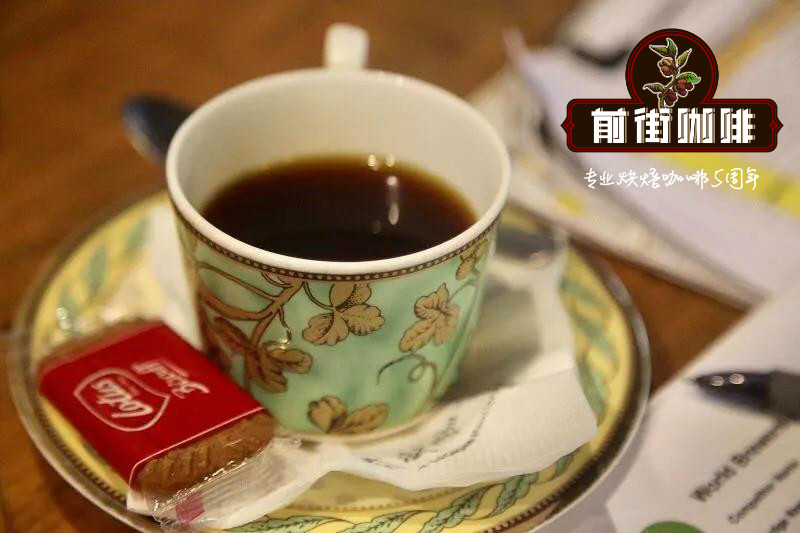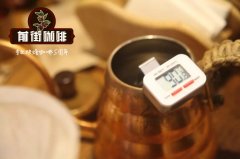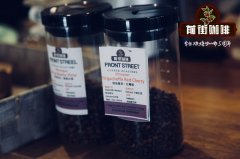What do you think of coffee flavor wheel? Teach you how to use coffee flavor wheel correctly!

Professional coffee knowledge exchange more coffee bean information please follow the coffee workshop (Wechat official account cafe_style)
Coffee Flavor Wheel is designed by the American boutique Coffee Association and the World Coffee Research Institute WCR to help you taste coffee and cup testing. since Flavor Wheel is an auxiliary tool, indicating that it can be used intuitively, here are a few tips for using Flavor Wheel:
Step 1: an overview of the flavor wheel
The flavor wheel is not only practical but also very beautiful. just like a good cup of coffee, it comprehensively describes the flavor of coffee. If you look at these flavor descriptions and absorb these words, you may see some unfamiliar words, but it doesn't matter. We'll talk about this part later. Let's take a look at the flavor written in this picture.
Step 2: taste the coffee
Flavor wheels can be used in informal or professional coffee cup tests. in any case, the key to cup testing is to taste coffee intuitively and prepare the cup test procedure rigorously. and taste the coffee from different aspects: the dry aroma after grinding, the wet aroma after water injection, and the flavor felt when sipping. We define "flavor" as the combination of taste and olfactory receptors, while the flavor wheel includes the sensation of taste (by the tongue) and smell (by the nasal cavity). However, most of the tasting is just a mixed feeling, such as the acidity and aroma of lemon, sweetness, bitterness, special aroma. Remember the flavor of the coffee you drink, and then take a look at the flavor wheel.
Step 3: start from the center of the flavor wheel
First from the center of the flavor wheel from the inside to the outside, the broader the description is closer to the center, and the more accurate the description is, the more close to the periphery. When using, you can stop at any place of the flavor wheel as you like; the more the user looks at the periphery, the more specific and accurate the flavor will be described. For example, a user may drink the flavor of fruit while tasting Ethiopian coffee, and when looking at the fruity section, the user may have a different description: fruit refers to berries? Dried fruit? Oranges? Or other fruits? If you choose citrus fruits, there will be more explicit descriptions of grapefruit, oranges, lemons or limes. When the flavor is found, it will go back to the center of the flavor wheel and start looking for another flavor to drink, repeating this action until everyone thinks that the flavor of the cup of coffee has been thoroughly described. This is the basic function of Flavor Wheel and is very easy to use. However, the flavor wheel is not only that, professional users can further use it.
Step 4: read the words
Coffee Flavor Wheel is drawn according to the Coffee sensory Dictionary compiled by World Coffee Research, which allows users to monitor coffee according to scientific basis. Even if many people don't use it to train their sense of taste, this dictionary can still assist you in using the taste wheel. Each flavor feature has its own definition and data source, allowing users to view specific words. Flavor wheel and sensory dictionary can be used together well, and can be traced back to the source of words if necessary. Dictionaries are not only a tool to train us to describe flavor, but also a good reference for professional cup testers. Although there are many chemical or technical terms that we are not familiar with, they all have clear explanations and sources.
Step 5: refer to the source of flavor
Every word of WCR has its own source of information, and many of them are easily available in daily life such as supermarkets or the Internet. But remember that the aroma cannot be observed, and the flavor may be possible, so it is necessary to increase the connection between aroma and flavor through tasting and smelling coffee. It is suggested that you can smell it with a cup, concentrate the aroma, write down what you feel, and then connect the flavor you feel through recall.
Step 6: go back to the center of the flavor wheel
With the knowledge of the words in the dictionary (and sometimes one or two words may be quoted), taste the coffee and go back to the center of the flavor wheel to describe the flavor for a particular word. Then if you look at the adjacent words, you will find that the distance between the words is not the same on the picture. if there are two words connected together on the picture, it means that the professional cup tester thinks they are closely related words in attributes; if there is a space in the middle, it means that the cup tester thinks they are not very relevant. Further, if the space in the middle of the flavor wheel is large, it means that the classification is not relevant; if you do taste correction, it will be very helpful to the tester when describing the flavor, or let most people understand the flavor you describe.
Step 7: use your own description
The advantage of using these tools is that they can become a common language for cup testing. Coffee makers can understand and use the description on the flavor wheel. With it in a cup testing room or coffee shop, they can communicate in a common way. Although it is good to describe as much as you can, it will make communication more difficult. So focus on the common language, which is what we pursue when we talk about coffee.
Step 8: study the colors on the chart
Our visual senses are strongly connected to other senses, and the appearance of food affects our association with its taste, so we often use vision to describe the flavor: this cup of coffee tastes "bright" or "red" or "green". As a result of this discovery, we pay special attention to the color on the flavor wheel and will try our best to connect the color attribute of the word. This may help cup testers who are hesitant to find a description. If the cup tester can only say, "it tastes like some kind of red fruit," you can look at the red area on the flavor wheel. "some kind of brown food" will lead the cup tester to the left side of the flavor wheel, where it may be exciting spices or cereal flavors.
When cup testers, teachers, sensory scientists and coffee makers all use this tool, it will make the flavor wheel more and more prominent. We are all eager to explore new technologies and ideas!
Important Notice :
前街咖啡 FrontStreet Coffee has moved to new addredd:
FrontStreet Coffee Address: 315,Donghua East Road,GuangZhou
Tel:020 38364473
- Prev

Can coffee be reheated? Three common mistakes you make when you like hot coffee!
Professional coffee knowledge exchange More coffee bean information Please pay attention to coffee workshop (Weixin Official Accounts cafe_style) Many people like to drink hot coffee, and it is fresh hot coffee, because the aroma of coffee is strongest when it is high temperature. Although good coffee still tastes good when it's cold, many people are still used to drinking it at high temperatures, and if they don't have time to drink it hot, they may still take it.
- Next

The things you are most likely to ignore about coffee beans! Coffee bag information disclosure!
Professional coffee knowledge exchange more coffee bean information Please pay attention to the coffee workshop (Wechat official account cafe_style) buying coffee beans is a subject, especially when there is so much information on the bean bags. You have "Nicaragua-medium-roasted washed beans-elephant beans" in one hand and "Brazil-medium-deep-roasted honey treated beans-Kaduai" in the other, thinking to yourself, what is the difference between these two packets of coffee? Where else?
Related
- Beginners will see the "Coffee pull flower" guide!
- What is the difference between ice blog purified milk and ordinary milk coffee?
- Why is the Philippines the largest producer of crops in Liberia?
- For coffee extraction, should the fine powder be retained?
- How does extracted espresso fill pressed powder? How much strength does it take to press the powder?
- How to make jasmine cold extract coffee? Is the jasmine + latte good?
- Will this little toy really make the coffee taste better? How does Lily Drip affect coffee extraction?
- Will the action of slapping the filter cup also affect coffee extraction?
- What's the difference between powder-to-water ratio and powder-to-liquid ratio?
- What is the Ethiopian local species? What does it have to do with Heirloom native species?

